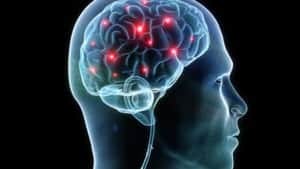Scientists may have found the keys to the brain’s memory center in a groundbreaking study that appears to confirm the physical storage area of long-term memories.
Our memories, it turns out, don’t reside in some abstract space or inside an impenetrable lock-box. Rather, they are situated alongside a humble molecule that circulates the brain. It’s known as calcium/calmodulin dependent protein kinase, or CaMKII for short.

Publishing in the journal Neuron, the research team, led by Brandeis University neuroscientist and biology professor Dr. John Lisman, “solves one of the oldest mysteries in neuroscience – how do our brains create and retain long-term memories?”
The study behind the findings, which disabled the CaMKII molecules in the brains of rats, an act that essentially erased the animals’ stored memories, throws the doors wide open to new research into memory loss. It also may pave the way to therapeutic memory-removal techniques, something that until now has been relegated to the pages of science fiction.
“Just like it’s unimaginable that we could understand cells if we didn’t understand DNA, it’s unimaginable that you can understand memory if you don’t know what molecule stores it,” said Lisman, the Zalman Abraham Kekst Chair in Neuroscience at Brandeis.
While the findings create an immediate opportunity for waves of additional research, the path that led Lisman to the CaMKII discovery was far from brief.
Unearthing the ‘Holy Grail’ in Neuroscience
Lisman first theorized that CaMKII molecules played a pivotal role in long-term memory storage in the mid-1980s. At that time, he knew that most brain molecules that activate a short-term memory existed for about a week before dying off or becoming inactive. But the nature of long-term memories meant that some mechanism must be in place to ensure memories survive over years and even decades.
“This became a holy grail in neuroscience,” Lisman said. “How can a molecule in your brain serve as a memory? How does nature accomplish this?”
At the time, Lisman was aware that CaMKII molecules could survive much longer than other molecules because a deactivated CaMKII molecule can spring back to life when it’s in the presence of other CaMKII molecules.
“The amazing thing about CaMKII is that once you turn it on, it stays on more or less forever,” said Lisman.
Related: A Shot of Electricity May Boost Your Memory
After years of research, Lisman’s persistence finally paid off. After a study suggesting another group of molecules – called PKMzeta – were the key to long-term memories caught the attention of the international community but later unraveled, Lisman implemented the same experiments but focused on the CaMKII molecules instead.
The study looked like this: His team would position a rat on a rotating platform, and every time the animal passed a specific location it would receive a short electric shock. In time, the animal remembered where the shock occurred and would run the other way.
Lisman’s team then deactivated the animals’ CaMKII molecules and put them back on the platform. This time, the rats scampered directly into the shock zone, as if they had never been there before. Their memories had been erased.
The team’s research may have opened the door to a vast new world of study.
“The evidence that CaMKII can serve as a molecular memory now opens the door to addressing the relationship of CaMKII to other major problems in memory research,” report the researchers in Neuron.
Richard Scott is a health care reporter focusing on health policy and public health. Richard keeps tabs on national health trends from his Philadelphia location and is an active member of the Association of Health Care Journalists.


![How To: ‘Fix’ Crepey Skin [Watch]](https://cdn.vitalupdates.com/wp-content/uploads/2017/05/bhmdad.png)












